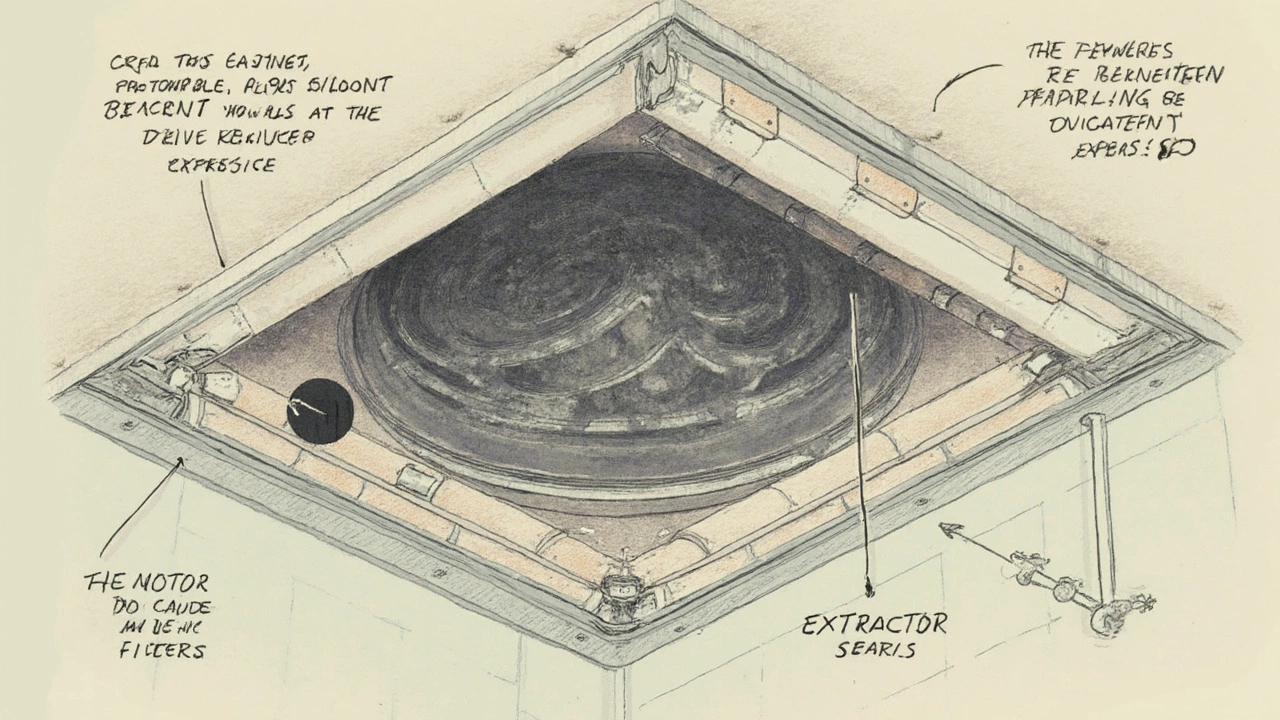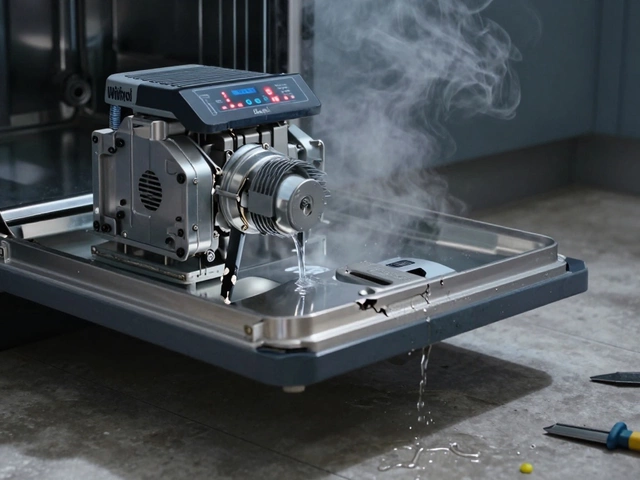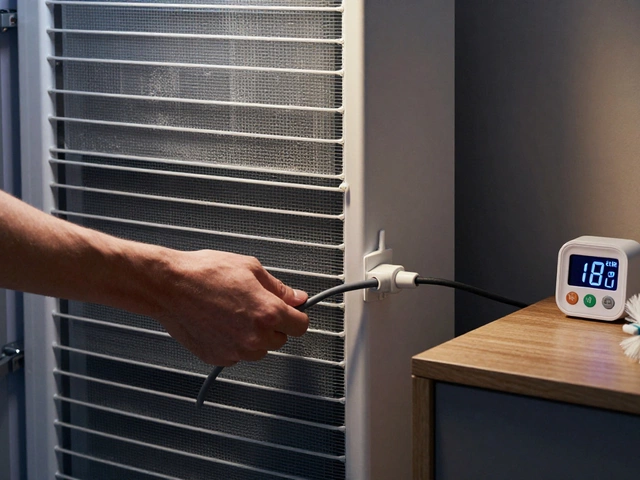Extractor fans play a crucial role in keeping your kitchen or bathroom free from lingering odors and moisture. Over time, though, they can start to show signs of wear, just like any other appliance. But what exactly does that look like, and can you do anything about it?
If you've ever noticed your fan making more noise than usual, or it just doesn't seem as powerful, those could be signs that it's facing some wear and tear. Fans, especially in high-use areas like kitchens or bathrooms, work hard to keep your air fresh and can age faster if they're not well-maintained.
Thankfully, there are a few simple steps you can take to keep your fan in top shape. Regularly cleaning the fan blades and ensuring the vents are free from obstructions can go a long way. Plus, catching these issues early can save you from bigger headaches and costs down the road.
- How Extractor Fans Work
- Signs Your Fan is Wearing Out
- Common Causes of Wear and Tear
- Maintenance Tips to Extend Fan Life
How Extractor Fans Work
Extractor fans are more than just a spinning device hidden above your stove or in your bathroom. These fans are designed to pull air from an area and expel it outside, helping to remove moisture, heat, smoke, and odors from your living spaces. Understanding the basics of how they operate can help you take better care of them.
Components at Work
There are a few key components that make up a typical extractor fan. Each part plays an essential role:
- Fan Blades: These are the moving parts that physically push air. As they rotate, they create a suction effect that draws air through a vent.
- Motor: The motor's job is to spin the fan blades. It's usually hidden away, but if it's struggling or making noise, it's often a sign something's not quite right.
- Ventilation Duct: This forms a pathway for the air to travel from the inside to the outside of your home. It’s like a highway for air traffic!
- Filters: Many fans have filters to catch grease and debris, preventing them from getting into the fan or building up in the ductwork.
Operation Explained
When you switch on an extractor fan, electricity powers the motor, which turns the fan blades. This action creates a vacuum, drawing air through a designated vent and directing it through the ducts to the outside. Smart designs might even include a backdraft shutter, which prevents outside air from sneaking back into your home when the fan is off.
Did You Know?
Most extractor fans are rated by the volume of air they can shift per hour, known as their cubic feet per minute (CFM) rating. The higher the CFM, the more air they're capable of moving. This is a handy measure when sizing a fan for specific uses, whether it's clearing steam in the bathroom or smoke in the kitchen.
A solid understanding of these components and mechanics can help you diagnose issues and make informed repair decisions.
Signs Your Fan is Wearing Out
Keeping an eye on your extractor fans is essential, especially if you notice changes in their performance. Here are some telltale signs that your fan might be wearing out:
1. Unusual Noises
Extractor fans are generally pretty quiet. If you start hearing strange sounds like grinding, rattling, or buzzing, it's a good indication something might be off. Loose parts or something caught in the fan could be the culprit.
2. Reduced Airflow
A fan that's losing its power to move air could be on its way out. Blockage might be the problem, but if cleaning doesn't resolve it, your fan's motor might be weakening with age.
3. Overheating
If your extractor fan is becoming noticeably hot during operation, that's a red flag. Overheating can be caused by dust buildup or a failing motor. Over time, this could lead to complete failure.
4. Flickering Lights
Some fans come with integrated lights. If those lights flicker or dim significantly when you turn the fan on, it might signal an electrical issue. This could indicate excessive power draw from the fan.
5. Stubborn Switches
A switch that’s getting tough to flip isn’t just annoying; it might mean a problem with the fan’s electrical components. If the fan doesn’t seem to respond when you switch it on, it’s something to investigate.
Quick Check
Need a quick reference for typical lifespan and what you might face as the fan ages?
| Component | Expected Lifespan | Common Issues |
|---|---|---|
| Motor | 8-10 years | Overheating, noise |
| Blades | 5-7 years | Dust buildup, obstruction |
| Electrical Parts | 6-8 years | Flickering lights, stubborn switches |
Being proactive about these signs can save you from bigger headaches or even having to replace your fan too soon. Regular maintenance is the key to keeping your fan running smoothly.

Common Causes of Wear and Tear
Extractor fans are built to last, but like anything, they’re subject to wear and tear. Let’s dig into what makes a fan start to struggle over time.
Poor Maintenance
One of the biggest culprits is simply a lack of maintenance. Without regular cleaning, dust and grime can build up around the fan blades and motor. This forces the extractor fans to work harder than they should, eventually wearing out faster. It’s kind of like driving a car with the handbrake on – you’re going to hit problems sooner.
Excessive Use
Running your fan non-stop doesn’t do it any favors either. Sure, extractor fans are meant to be used regularly, but nonstop usage especially in high-moisture areas can lead to moisture building up in the fan’s components, leading to rust or electrical issues.
Improper Installation
Believe it or not, improper installation can be a real pain. If a fan’s not installed correctly, it might not ventilate efficiently, making the motor strain over time. So, checking your fan fits snugly and the ducting’s efficient helps minimize stress on the system.
Wear and Tear from the Environment
Where you live can also play a part. If you’re in a high-humidity area, moisture takes a toll, potentially causing rust in the fan’s moving parts. Meanwhile, if you’re in a dusty place, filters can get clogged quicker, slowing down your fan’s performance.
Understanding these common causes can help you keep your fan running smoother, longer. With a little knowledge and some regular TLC, you can seriously extend the lifespan of your favorite fan.
Maintenance Tips to Extend Fan Life
Taking care of your extractor fans isn't just about keeping the air fresh; it's also about making sure you don't find yourself shelling out cash for a new one before you really need to. Let's dive into some easy maintenance tips that can help you extend their life.
Regular Cleaning
One of the simplest yet crucial tasks is cleaning. Dust and grease can seriously mess with your fan's performance. Every couple of months, make sure to:
- Turn off the power. Safety first, folks!
- Remove the cover or grille, usually secured with screws.
- Wipe down the blades and cover using a soft cloth with a mild detergent. No need for anything hardcore.
- Carefully vacuum out any visible dust or debris around the motor parts.
Having a clean fan can help it function like a dream, ensuring efficiency and longevity.
Check for Obstructions
Every once in a while, it's a great idea to peek into the ductwork. You'd be surprised at how many fan repairs are just about clearing a blockage! Make sure the vent duct remains free of toys, leaves, or any other random objects.
To do this,:
- Inspect the duct and fan regularly.
- Check exterior vents to ensure they aren't blocked.
- Remove any obstructions with a gentle push or pull.
Listen and Observe
A properly functioning fan should hum along without too much fuss. If yours starts making odd noises, it may need some TLC. Neglecting these sounds could put you on the fast track to a bigger problem.
Tighten Loose Parts
Due to regular vibrations, screws and other fixtures can become loose. Give them a quick check and tighten them if necessary. This might stop those annoying rattling sounds and keep everything secure.
Simple Statistics
Here's a quick look at how proper maintenance can impact fan lifespan:
| Without Maintenance | With Regular Maintenance |
|---|---|
| Estimated 3-5 years lifespan | Estimated 7-10 years lifespan |
| Frequent noise complaints | Quieter operation |
Regular maintenance of your extractor fans can push their lifespan beyond the average years, saving you significant costs in the long run. Just a little effort on your part every now and then can make a big difference!





